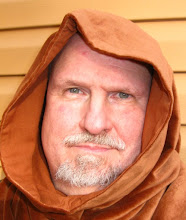...Jack Kerouac, Linda Lovelace, Hugh Hefner, and others.
Part 5 of a continuing discussion of prominent people. A couple of examples:
Pete Seeger: Seeger… he's a saint. Pete Seeger's a fucking saint, but I never found his music very interesting. You know, musically he can play the banjo, but he's so political, so deeply, vehemently political — and I agree with his politics completely — but it made his music political; the message was more important than the quality of the music to him. He's a literary musician, you know? But he dedicated himself to getting out there an playing these left-wing, rousing songs to labor unions and strikers, it's amazing they never put him in jail. Well, actually, I think he was in trouble for a while but he never went to jail. Is he still alive? I think he is. I think he's still going! I know someone who recently talked to him and I guess Seeger is very inspirational. He's still very lucid and he talked about the old days. You know, he started all that political campaigning in the '30s, and he started very young with that. He's from an upper-class family with money. I think it was the Seeger family whose maid was Elizabeth Cotton, and one day they found her playing guitar and singing and they went, "Oh my God! This woman is a talented singer/musician!" Somebody, years ago, gave me, as a gift, a huge box set of ten LPs of all of that left-wing folk music done by the folknics, not by the real folk, but the folknics of the '50s and early '60s: the Almanac Singers; Joan Baez and Pete Seeger. It's just totally uninteresting. Real country hillbilly music by deeply ignorant, racist people is much more interesting than that stuff. As I said, I agree totally with their politics, but musically it's really uninteresting. The whole folknic scene, even when it was happening in the late '50s and early '60s, I was never moved by it. I preferred rockabilly. [laughs]
Michelangelo: Michelangelo? That's interesting, because just last night Pete Poplaski and I were looking at a book of reproductions of the Sistine Chapel. I had seen it before, but now they've just restored the place and everything is very bright and clear now. And examining it, Pete and I had a discussion about it, because Pete's into all that Renaissance art, and I was looking at it and it just seemed very mannered and stylized to me and not very interesting. The guy is just like glorifying the male body. It's all about writhing, muscular male bodies. And even the women, they have male bodies with tits pasted on. The guy's not into women, you can tell. He's not into feminine at all. He's not interested in the round, elliptical charms of the female form. No, he's interested in the lumpy, muscular male body. And the whole Chapel is nothing but that. And I couldn't find... there wasn't much of a humanistic element, it's just so mannered. And Pete pointed out, as I was talking to him about it, he said, "It's all about the expression of romantic, religious ideas. It's not about real human beings." So for me, there's no subtle humanity about the expressions or what's going on. It's a very deeply Italian thing. A lot of that Renaissance art is like that to me. I prefer the Flemish and German stuff of that period, you know, it's got much more to do with real life and real human beings. Bruegel, to me, is much more interesting than Michelangelo and a lot of those other Renaissance artists from Italy. Even Leonardo's not that interesting to me, although he was one of the first artists to make very, very detailed, naturalistic drawings and paintings. But he's only marginally interesting to me.
Click the link to read them all; the previous discussions can be found there in the sidebar, as well.
Thursday, February 21, 2013
Subscribe to:
Post Comments (Atom)








No comments:
Post a Comment